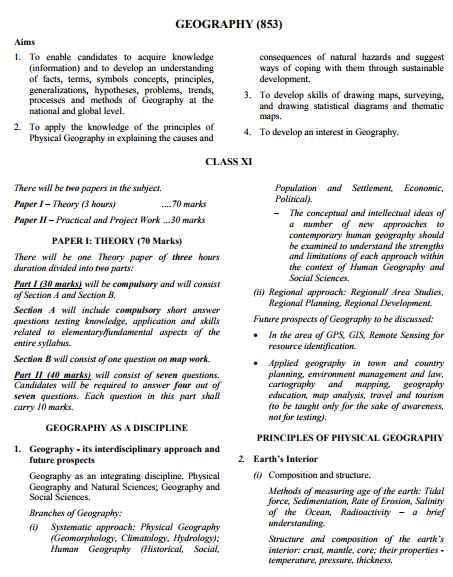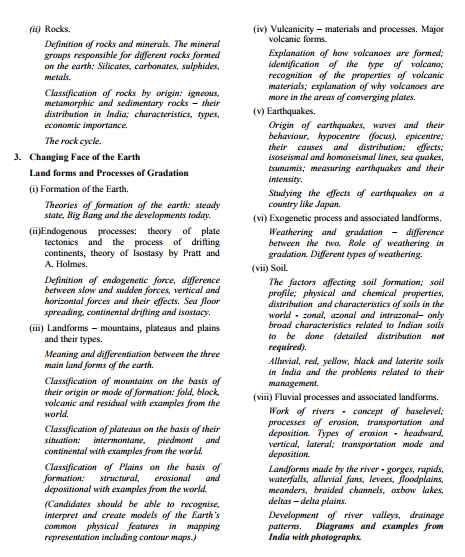|
#2
27th January 2018, 10:59 AM
| |||
| |||
| Re: CISCE Org Syllabus For ISC
Council for the Indian School Certificate Examinations (abbreviated as CISCE) is a national level, private, Board of School education in India that conducts the Indian Certificate of Secondary Education and the Indian School Certificate examinations for Class X and Class XII respectively Syllabus Geography INDIA IN THE WORLD S CONTEXT 1. Physical Environment (i) Locational setting - India: size and area. Present importance of the location of India with reference to the Indian Ocean Rim countries and the Northern and Western frontiers. Comparison with China and Australia. Extent, position with reference to latitude and longitude, length of coastline and frontiers with neighbouring countries. The locational advantages of India in the Indian Ocean and as a subcontinent. (ii) Structure of India Geological formation, relief and drainage; major physiographic divisions and their characteristics. (a) Outline of the geological evolution and structure: basic definitions geology, era, periods, physiography, geological structure, stratigraphy. Names of the main Standard and Indian geological eras with reference to Indian Geology. Geological evolution of: the Peninsular Plateau, the Himalayas and the Great Plains. Difference between the Peninsular Plateau and the Himalayas. (The Geological rock formations of India are not required). (b) The three-fold physiographic divisions: the Himalayan mountain complex, the Indus-Ganga-Brahmaputra Plains and the Peninsular Plateau Himalayan mountain complex: (orthoclinal structure) The three parallel ranges, the northwest and northeast offshoots, comparison between Western and Eastern Himalayas. Regional divisions of the Himalayas (Kashmir/ Punjab Himalayas, Himachal/ Uttranchal/ Kumaon Himalayas, Nepal Himalayas, Assam Himalayas). Indus-Ganga-Brahmaputra Plains The relief features bhabar, tarai, bhangar, khaddar, bhur, barind, barkhans, khols, dhaya, bet, chos, doabs. Regional divisions of the plains: Rajasthan plain (the Great Indian desert), Punjab plain, Ganga plain, Brahamaputra/ Assam plain.). The Peninsular Plateau The Malwa plateau, Chotanagpur Plateau and Deccan Plateau: the relief features - badland, barkhans, Western Ghats, Eastern Ghats, Aravalis. Comparison between the Western Ghats and the Eastern Ghat Climate: India Factors affecting India s climate: Temperature - factors affecting temperature. Atmospheric pressure conditions during the year; origin and mechanism of the monsoon, Jet streams, Southern Oscillations; wind and rainfall distribution during the year; characteristics of the four main seasons - hot and dry, hot and wet, cool and dry, cool and wet with reference to temperature distribution in north and south India, pressure, wind conditions distribution of resultant rainfall; variability of rainfall, incidence of droughts and floods. Temperature and rainfall graphs of Mumbai, Delhi, Kolkata, Chennai, Jaisalmer, Leh, and Hyderabad Rest of the Syllabus you may get from the below Attachement that is Free to Download Syllabus of the ISC (CLASS XII ) Subject Geography of the Council For The Indian School Certificate Examinations    |